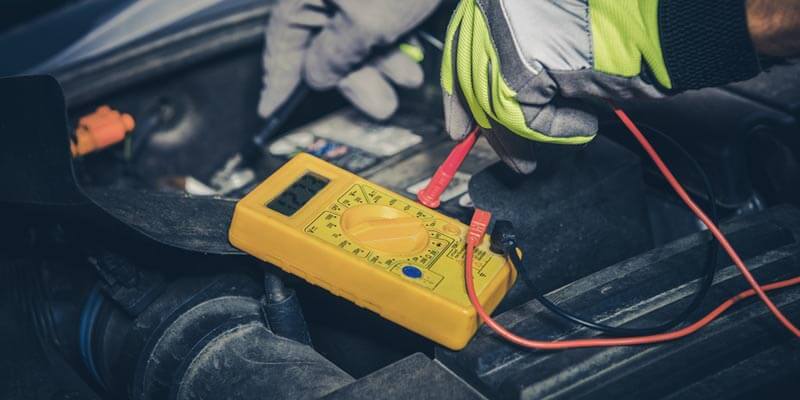A bad spark plug is something that most car owners have to deal with. However, knowing how to test a spark plug with a battery will tell you if the issue is with the spark plug itself or not.
So, before you head to any auto repair shop, be sure to follow the procedures mentioned below to figure it out yourself.
Required Materials
Before moving on to the testing, you are going to need a list of the following things –
- 9V battery
- Ignition coil
- Spark plug
- Positive jumper cable
- Negative jumper cable
- Distributor
Testing the Spark Plug with the Help of a Battery
You should properly clean your spark plug before testing for a spark. Also, as we’re going to work with high voltage electricity, you should wear plastic gloves to protect yourself from electrocution.
The inherent air gap of the spark plug has a very high resistance. It’s recommended to use a 9v battery for this reason. In addition, the ignition coil attached with it ramps up the voltage even more to create a spark.
1. Setting up the Distributor
Now, the first thing you need to do is to set up the distributor. Then, you need to connect both the battery and coil with the distributor. After that, you must take the battery and attach the positive and negative jumper to the positive and negative end of the battery, respectively.
2. Attaching the Spark Plug
Next, we will set up the spark plug. For this, you just need to attach the upper end of the spark plug to the distributor.
3. Testing the Spark Plug
Finally, you have to connect the positive wire of the ignition coil with the positive jumper of the battery. With this, a tester for a spark plug is created. Now, as long as we connect the negative wire and the negative jumper together, a spark will be created on the spark plug.
However, the spark will only be created if your spark plug is in good condition. If it doesn’t work, your spark plug is most probably dead. In this case, it is better to get the spark plug replaced.
FAQ
No, normal batteries cannot be used for testing due to the very high spark plug OHMS resistance. So, if you take a low-power battery, it won’t be able to gather enough energy to create a spark on the spark plug.
However, you can use batteries with more voltage, like a 12V battery. Batteries with higher power will help the testing process go much smoother than low-volt batteries.
Yes. Unless you have the proper equipment, you might get easily electrocuted if you touch any of the materials during the process. Though it is very unlikely to cause death, there is always a chance that you may end up with really bad injuries that might even send you to a hospital.
The most common problem due to a bad spark plug is engine misfiring. If your car experiences frequent engine misfires, you are advised to check your spark plug. Other problems may include – lack of acceleration, car not starting, high fuel consumption, etc.
The ignition coil is an indispensable factor in this experiment. Without it, your battery won’t have enough power to create sparks on the spark plug. When you use an ignition coil, it will ramp up the power of your battery by thousands of volts.
Conclusion
I hope by reading this article you’ve figured out testing a spark plug with a battery—no more wasting time on this spark plug issue. If you find it faulty, only then head to an auto mechanic store.

